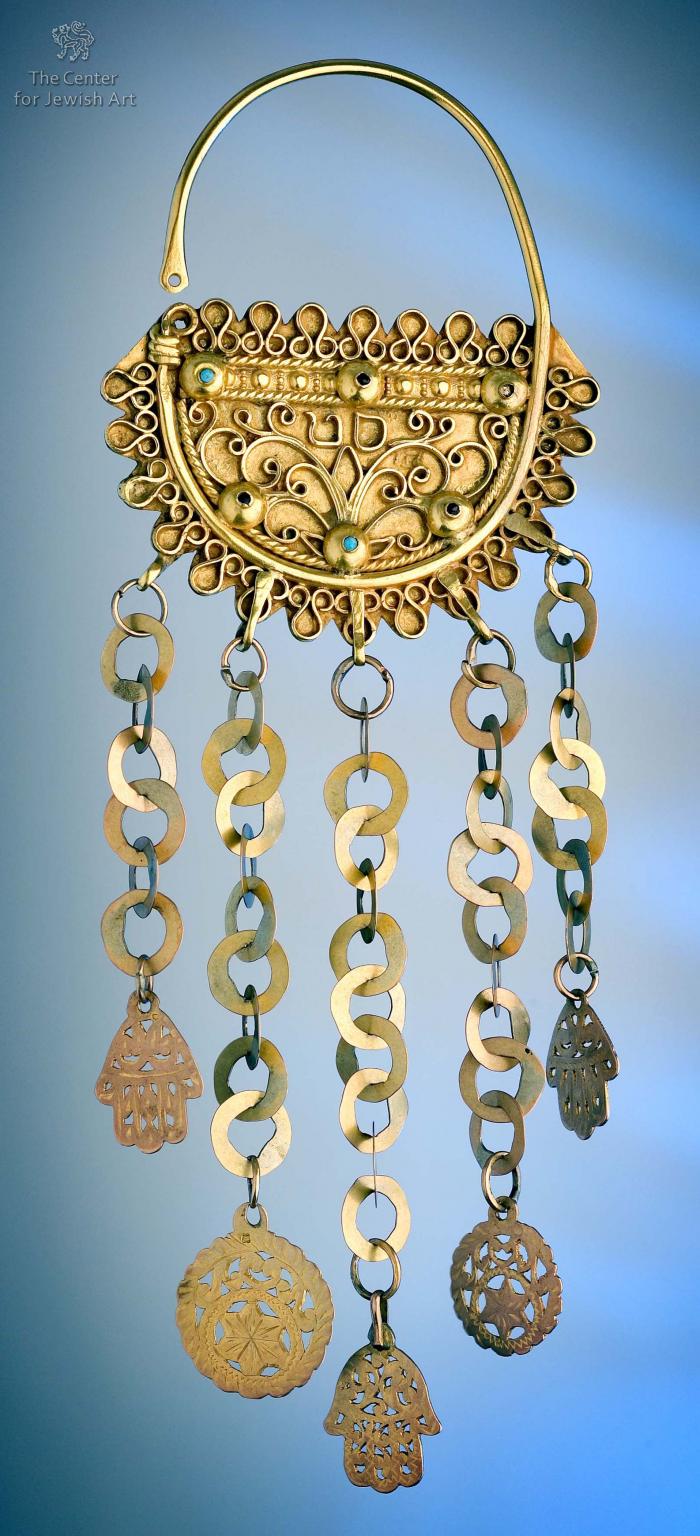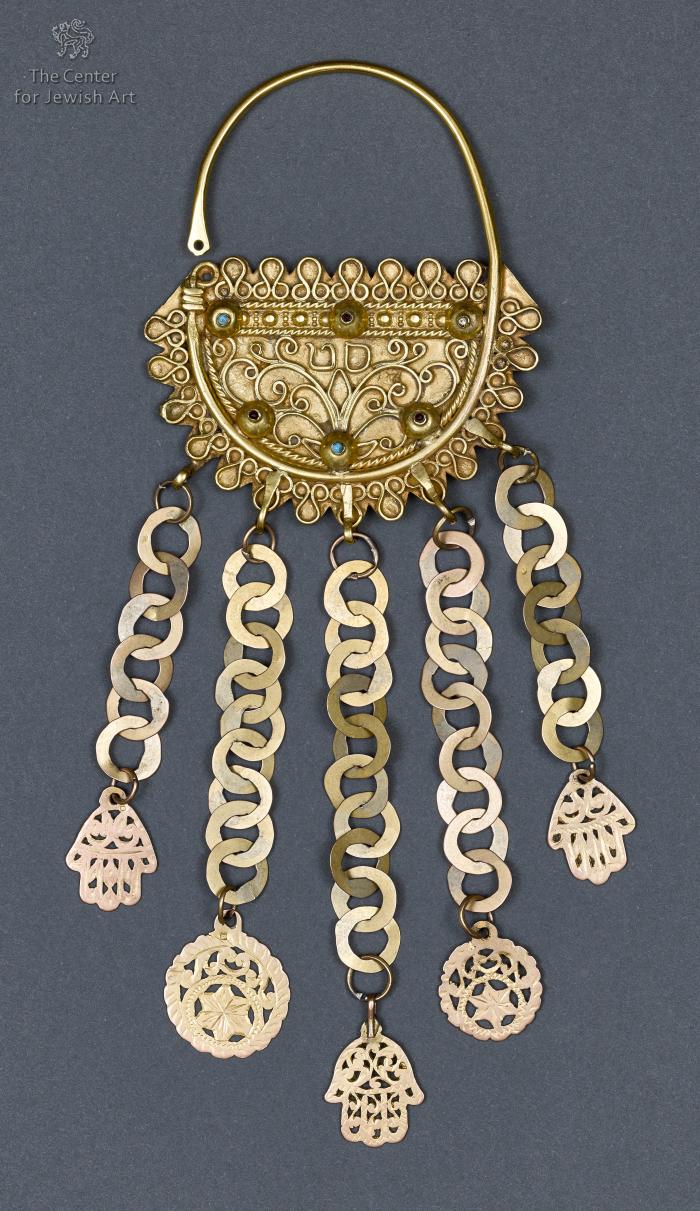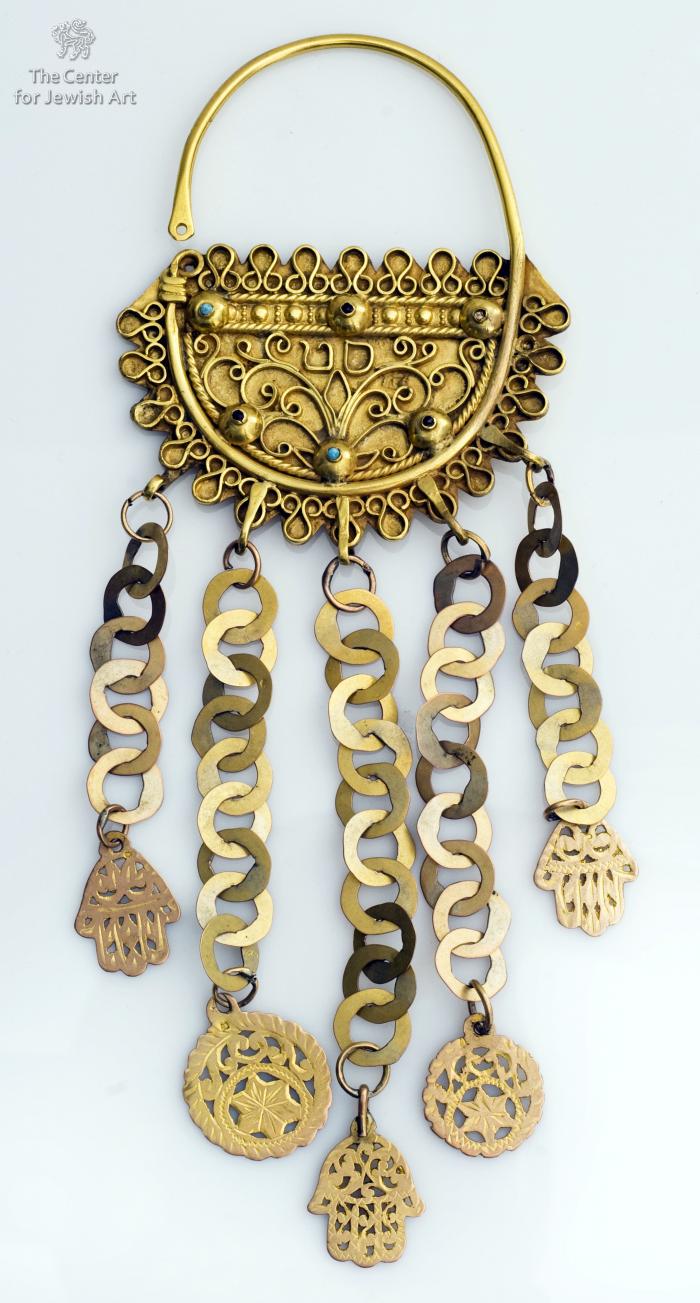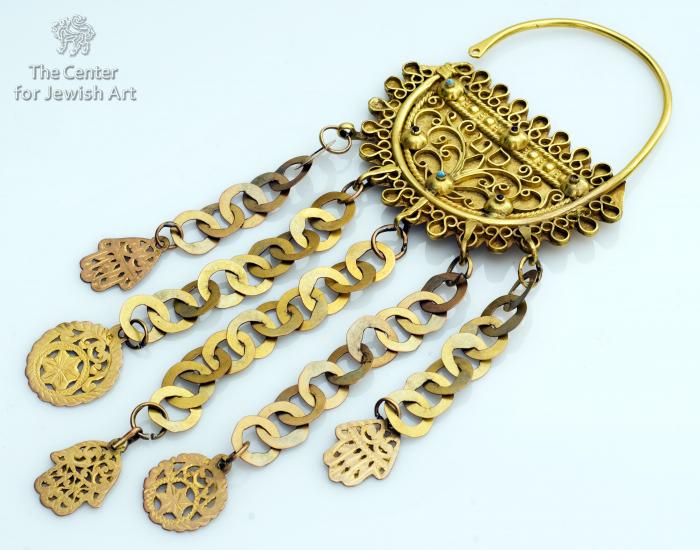Obj. ID: 37010 Amulet, Djerba, 1905 - 1917

sub-set tree:
The following description was prepared by William Gross:
From earliest times, man has tried to protect himself from misfortune by the use of objects which he considered holy or otherwise (e.g., magically) potent. Amulets and talismans are items generally worn around the neck or wrist, carried in a pocket or purse or hung on a wall. They are meant to protect or aid those who carried or wore them. The Hebrew word for amulet, kame‘a, has the root meaning "to bind". Jewish amulets are usually comprised of texts (either letters or graphic symbols) that are inscribed on some sort of material; some may also contain plant matter or precious stones. The texts of amulets usually include holy names that are believed to have the ability to affect reality, along with incantations summoning angels or other magical powers. For the most part, an amulet has a specific purpose: to ease childbirth, facilitate recovery from illness, improve one’s livelihood, and so on, but in the modern world many are also made for general protection.
The Jewish jewelers of Djerba were reknowned for their skills ar fashioning delicate gold objects. This is a fne example of their work. This is an "earing", that hangs from the hair on both sides of a woman's head.
This type of jewelry is used by both Jews and Moslems in Tunisia, but in this case carries two Hebrew letters, Samech Tet (Siman Tov?), signifying the exclusive Jewish use of this particular piece. This object was always a part of a pair, and the companion piece is located in the Stieglitz collection found in the Israel Museum in Jerusalem. Three small hamsas hung from the chain add to the amuletic value of the piece, which is fashioned from 18 Karat gold. . These hands and the Hebrew letters for good fortune probably indicate the use of this jewelry as a part of the costume of a bride. Three of the small gold pieces at the end of the chains carry hallmarks that were in use in Tunisia between 1905 and 1917. The chain is formed from the beautiful flattened linked rings known as "Rechannah" work.








